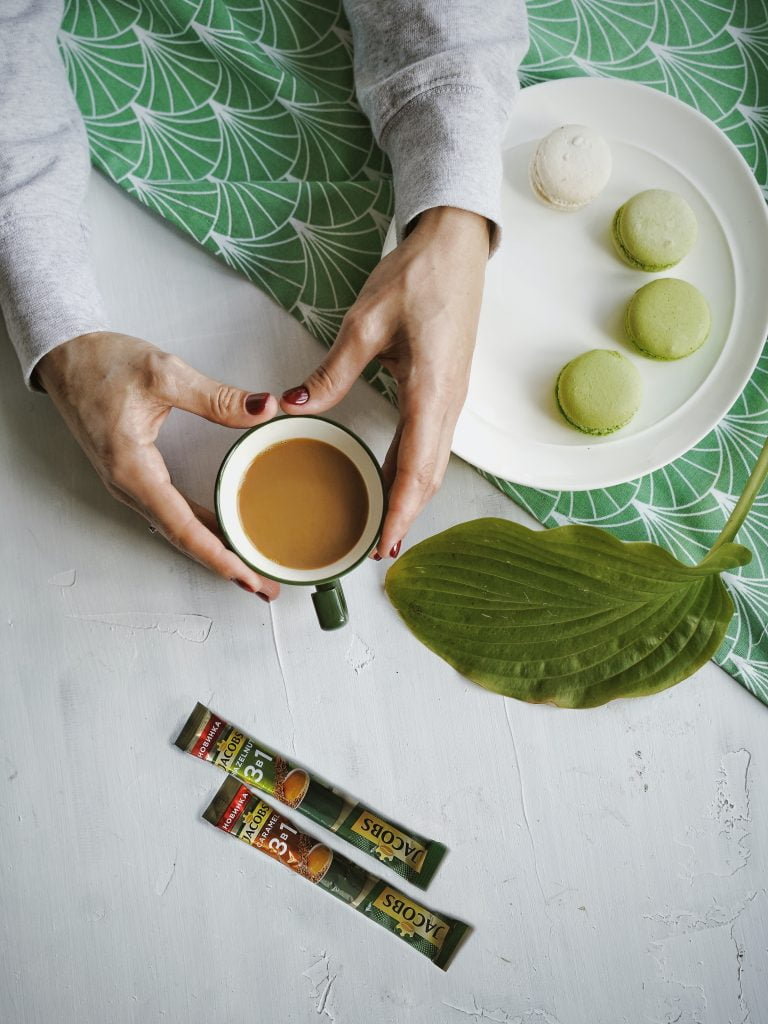Green Tea – Matcha – and White Chocolate Ganache Macarons
adapted from Baroque Bistro Patisserie by Honey and Soy
GREEN TEA AND WHITE CHOCOLATE GANACHE FILLING
Ingredients
400g Fresh Cream
400g chocolate (White couverture)
150g butter
20g matcha powder
GREEN TEA MACARON SHELL
Ingredients
600g sifted TPT (300g Almond meal with 300g icing sugar)
10g matcha powder
120g egg whites
Additional Ingredients
300g Caster sugar
75g water
120g egg whites
Step 1: Preparing the Ganache Filling
- Finely chop the chocolate and cut the butter into small cubes.
- Bring the cream to a boil.
- Pour ¾ of the boiled cream over the chopped chocolate and let it sit for a few minutes to start melting the chocolate.
- Stir gently with a spatula in a circular motion, being careful not to incorporate any air.
- Once the mixture is shiny and uniform, pour in the remaining cream and repeat the stirring process. Ensure the temperature of the chocolate does not exceed 55°C.
- Add the butter and stir until it is fully incorporated into the chocolate.
- Cover the ganache with cling film and refrigerate until set.
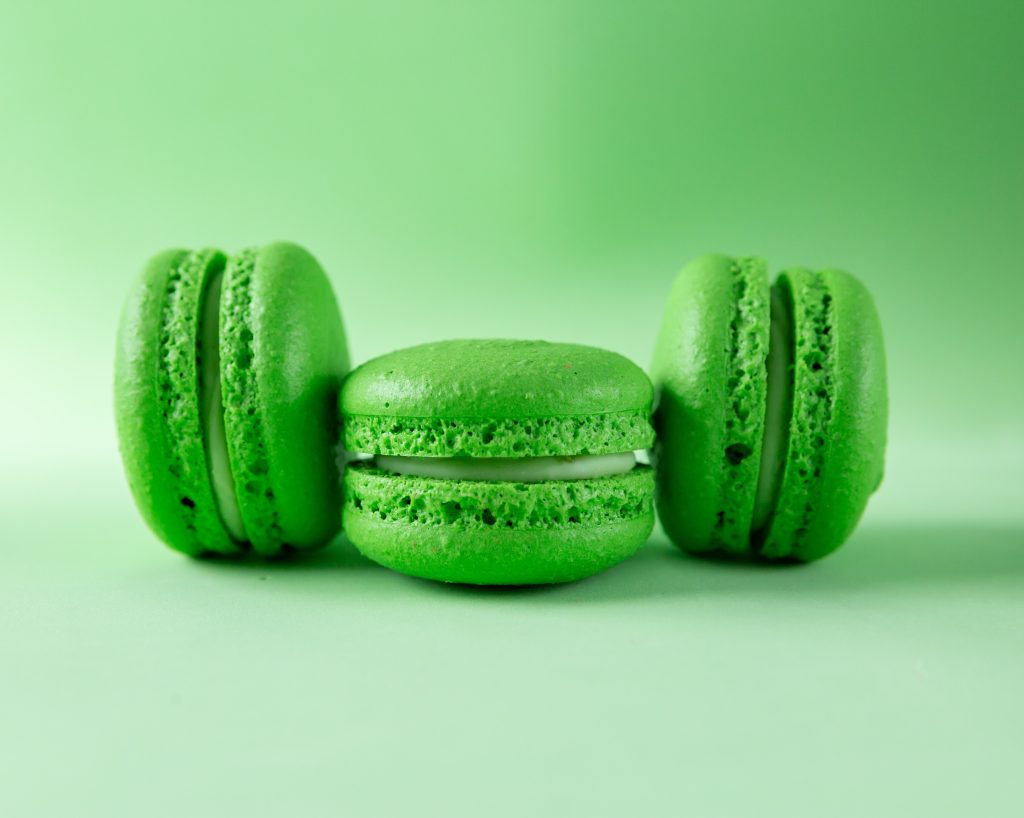
Step 2: Preparing the Meringue Shells
- Sift the matcha powder with the TPT (Tant pour Tant, a mixture of equal parts ground almonds and powdered sugar).
- Combine the TPT with the egg whites, stirring vigorously until a smooth paste forms.
- In a separate bowl, combine the caster sugar, water, and colour, and start heating.
- Place the aged egg whites in a mixer with a whisk attachment.
- Start whipping the egg whites to a ‘soft peak’ consistency when the sugar mixture reaches 115°C.
- Once the sugar mixture reaches 118°C, remove it from the heat and slowly pour it over the still-mixing egg whites.
- Increase the mixer speed to maximum for about 1 minute, then reduce to medium for another 2 minutes. Allow the meringue to cool to around 50°C while mixing slowly.
- Gradually fold the meringue into the TPT and egg white batter using a spatula. Gently mix from the sides to the center until the batter is uniform and glossy.
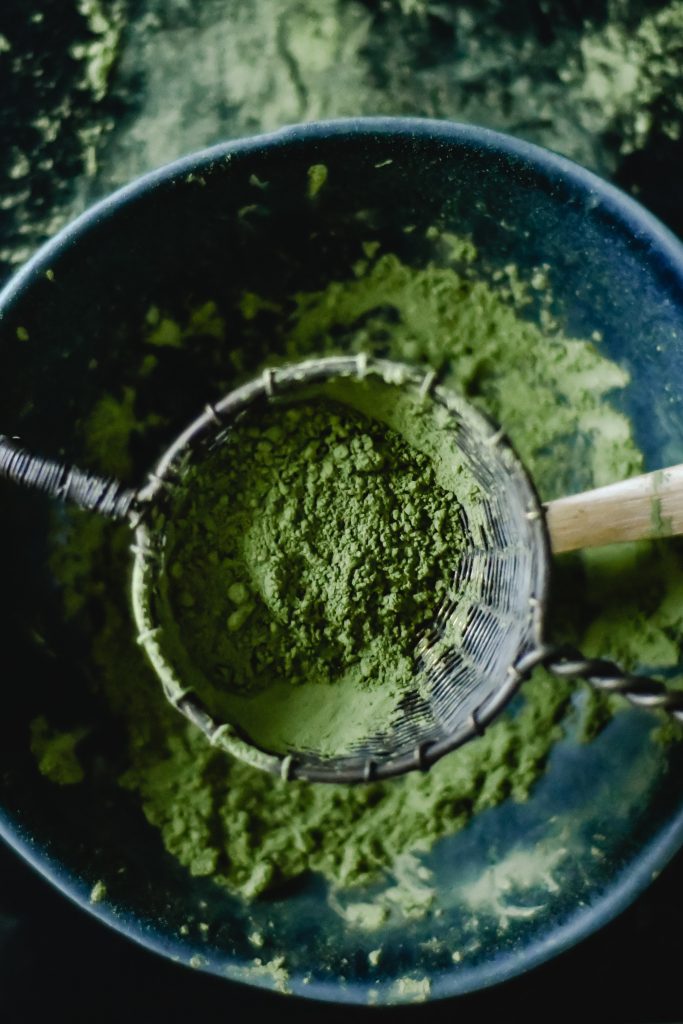
Step 3: Piping and Baking the Meringue Shells
- Using a plastic piping bag fitted with a no. 11 tip, pipe the batter onto a baking sheet following a size template. Stop piping before the batter reaches the edge of the template.
- Gently tap the tray on the side of the counter until the macaron batter reaches the size of the template. Remove the template from under the baking sheet.
- Allow the macarons to rest at room temperature for 15 minutes, or until they form a skin and are dry to the touch.
- Bake the macarons according to the cooking guide for your specific oven type.
- Once baked, slide the paper off the tray and let the shells cool, preferably on a wire rack.
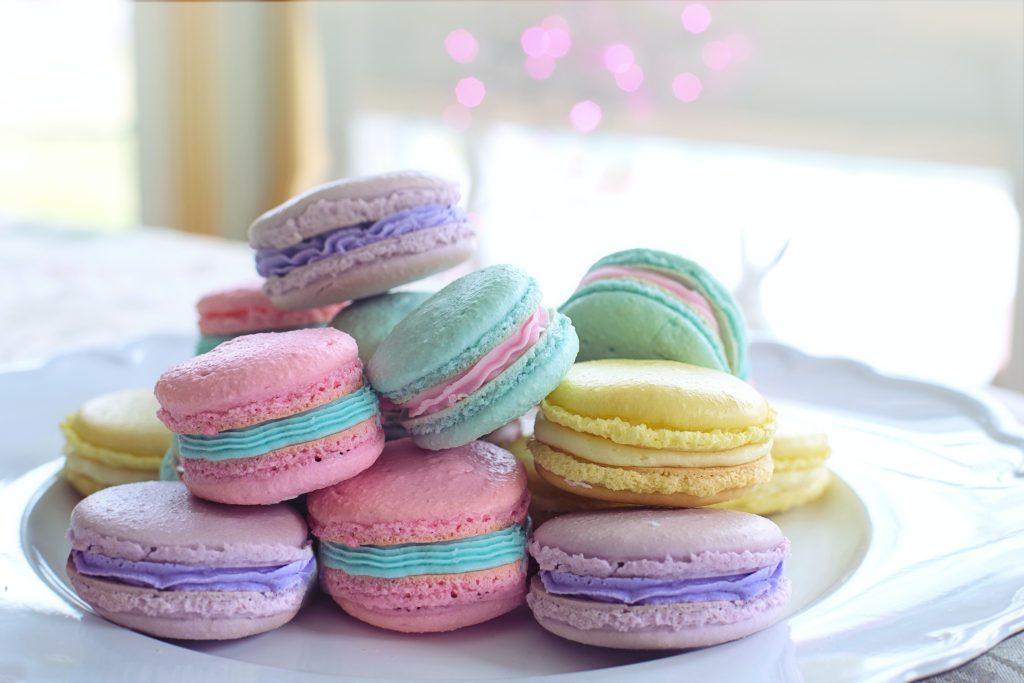
Step 4: Assembling the Macarons
- Gently remove the shells from the paper and turn them upside down.
- Pair the macaron shells by size and arrange them on your work surface.
- Transfer the green tea ganache into a piping bag.
- Pipe the ganache onto one half of each macaron pair, filling them generously but leaving about 3mm space from the edge of the shell.
- Hold the ganache-filled shell in one hand and the empty shell in the other. Close the macaron by gently twisting the two shells together from left to right, allowing the filling to spread evenly to the edge of the shells.
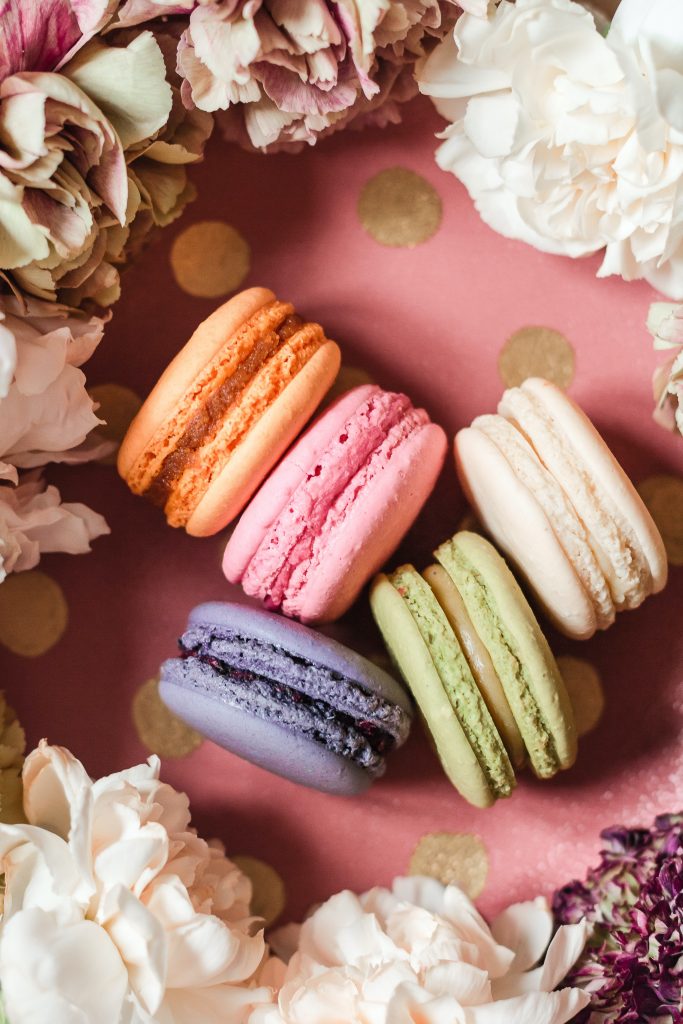
Storing and Serving
- Place the finished macarons on a tray and refrigerate for at least 24 hours.
- Before serving, allow the macarons to return to room temperature.
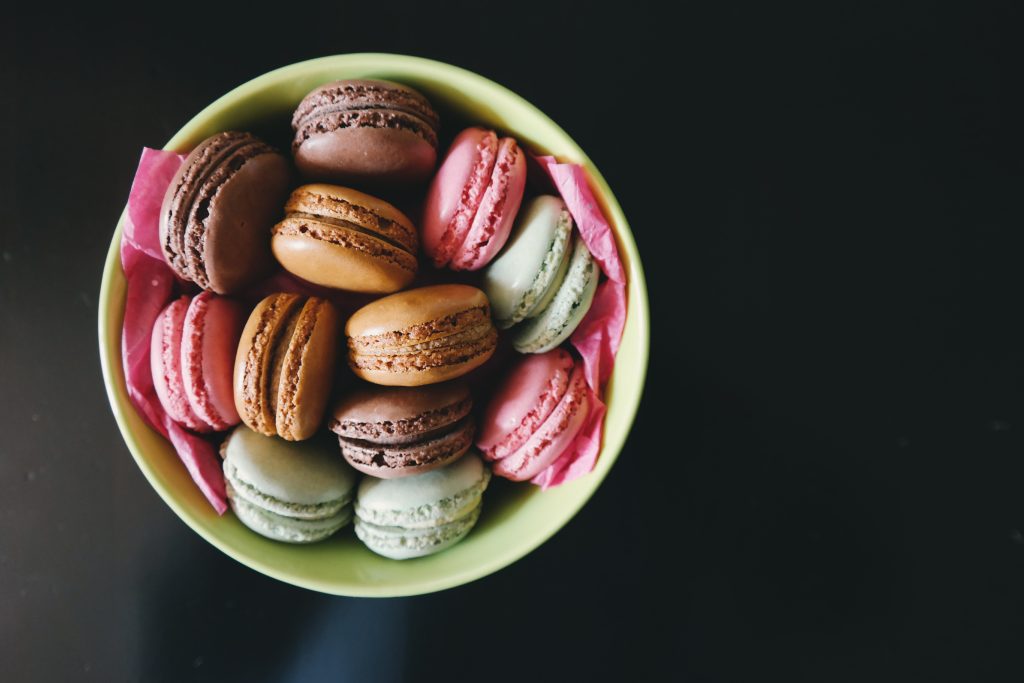
Matcha Green Tea: From Ancient Rituals to Modern Wellness
Table of Contents
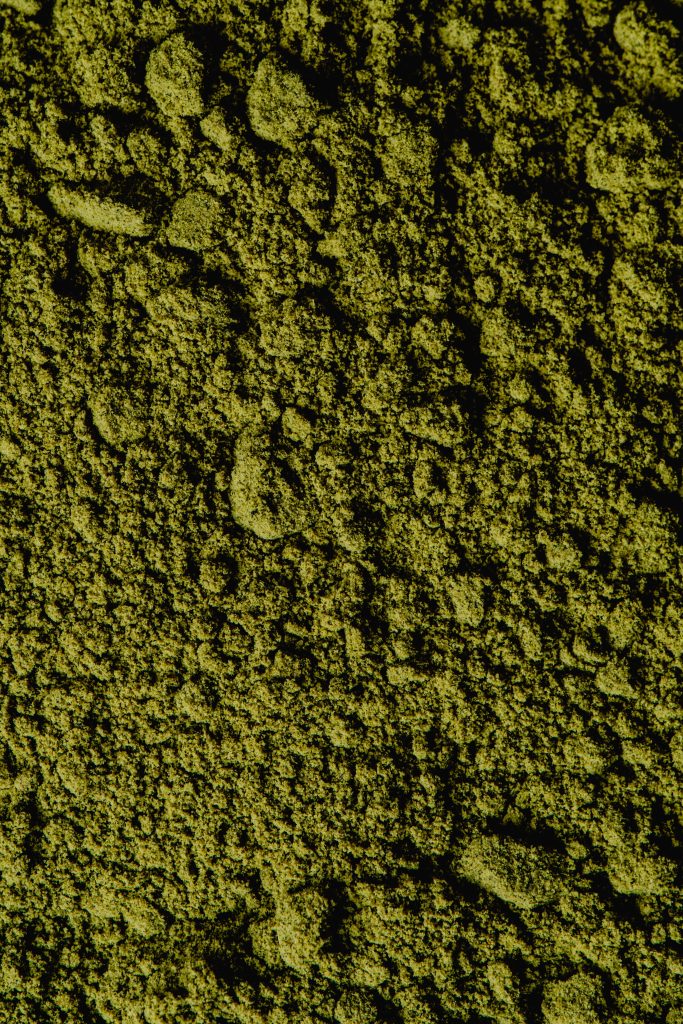
The Origin of Matcha
Matcha originated in China during the Tang Dynasty (618-907), where tea leaves were steamed and formed into tea bricks for storage and trade. The tea was prepared by roasting and pulverizing the tea, and decocting the resulting tea powder in hot water, then adding salt. In the Song Dynasty (960-1279), the method of making powdered tea from steam-prepared dried tea leaves, and preparing the beverage by whipping the tea powder and hot water together in a bowl became popular.
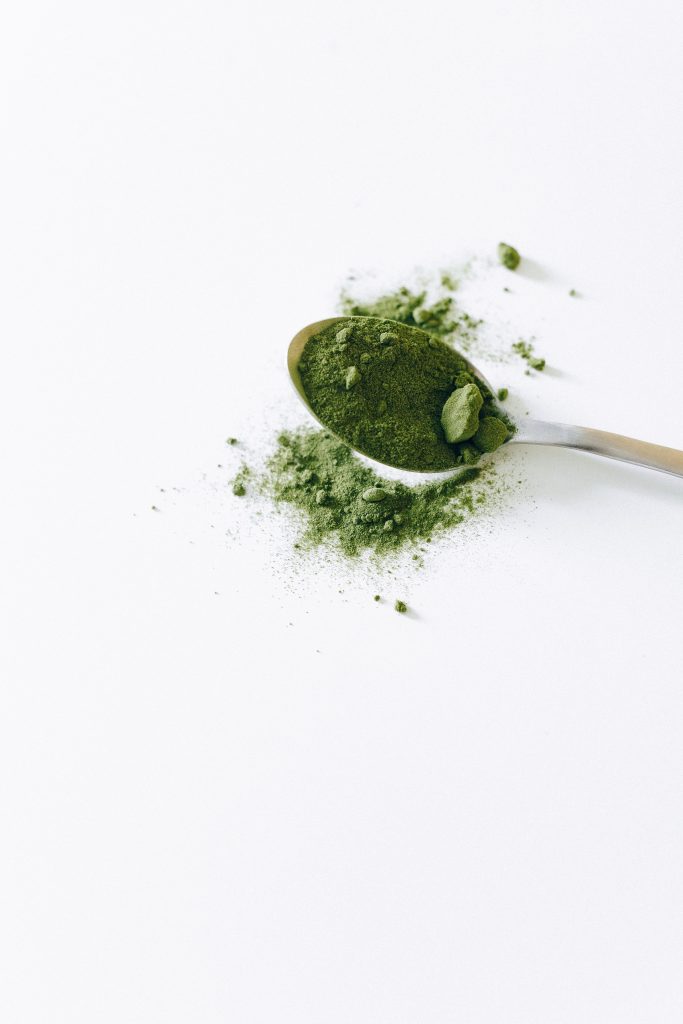
Matcha in the Past
In the 12th century, the method of making Matcha was brought to Japan by a Buddhist monk, Eisai. He introduced tea to the samurai class, quickly becoming a staple of Japanese culture. The tea was used in traditional Japanese tea ceremonies, a practice that continues to this day. The ceremony, known as “Chanoyu”, values the concepts of harmony, respect, purity, and tranquillity.

Matcha and Modern Times
In modern times, Matcha has gained popularity worldwide due to its unique flavour and numerous health benefits. It is used in various forms, from traditional tea to flavouring in foods and desserts. Matcha is also a popular ingredient in health and wellness products due to its high antioxidant content. It is often associated with mindfulness and meditation, reflecting its origins in Buddhist traditions.

Properties of Matcha Green Tea
Matcha Green Tea is rich in antioxidants, particularly catechins, which are believed to have cancer-fighting effects on the body. It also contains a unique type of caffeine known as theophylline, which sustains energy levels without any adverse effects. The presence of L-theanine, an amino acid, induces relaxation without drowsiness and aids in concentration. These properties make Matcha a beneficial drink for maintaining good health and well-being.
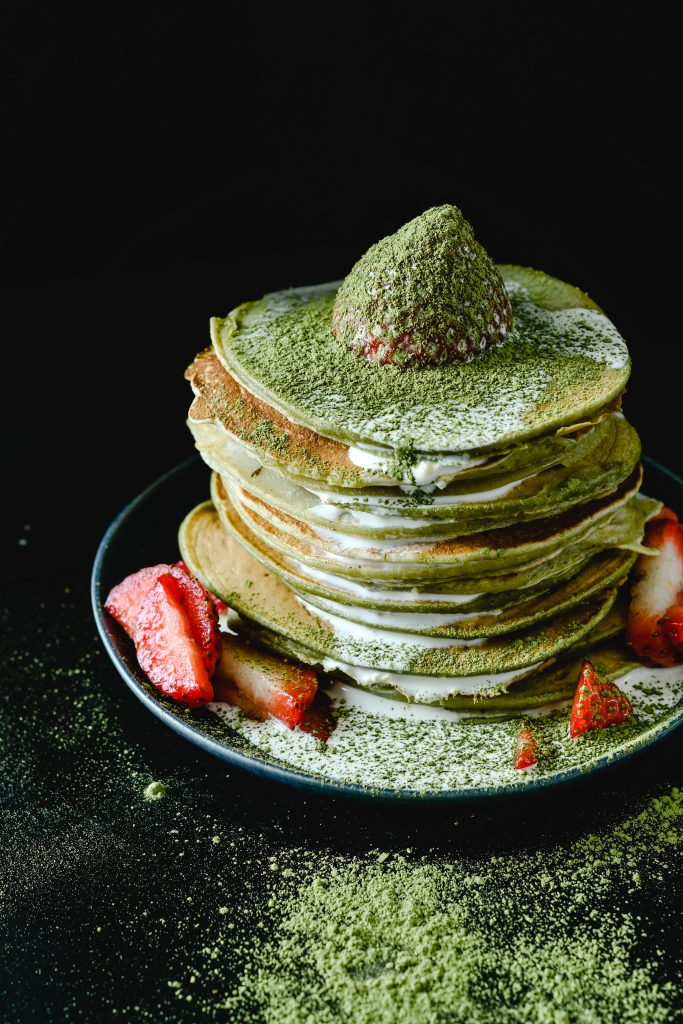
Matcha and Honey
Recently, the combination of matcha and honey has become a popular way to enjoy this traditional beverage. Honey not only adds a touch of natural sweetness to the slightly bitter taste of matcha but also brings its own health benefits.
Honey, a natural sweetener, has antioxidant, antibacterial, and anti-inflammatory properties. It’s also a healthier alternative to processed sugars. When paired with matcha, it creates a blend that’s not just delicious but also packed with potential health benefits.
One popular way to enjoy matcha and honey is in a matcha honey latte, a soothing and energizing drink that can be easily made at home. Just whisk together hot water and matcha powder, add warm milk (dairy or non-dairy alternatives work well too), and sweeten it with a spoonful of honey. Whether you’re starting your day or looking for a mid-afternoon pick-me-up, a matcha honey latte can be a delightful and healthy choice.
In summary, matcha green tea, with its roots in ancient Japanese culture and its place in modern wellness trends, continues to be a versatile and beneficial addition to our diets. Whether enjoyed traditionally, in culinary creations, or paired with honey, matcha offers a unique combination of history, culture, flavour, and health benefits.
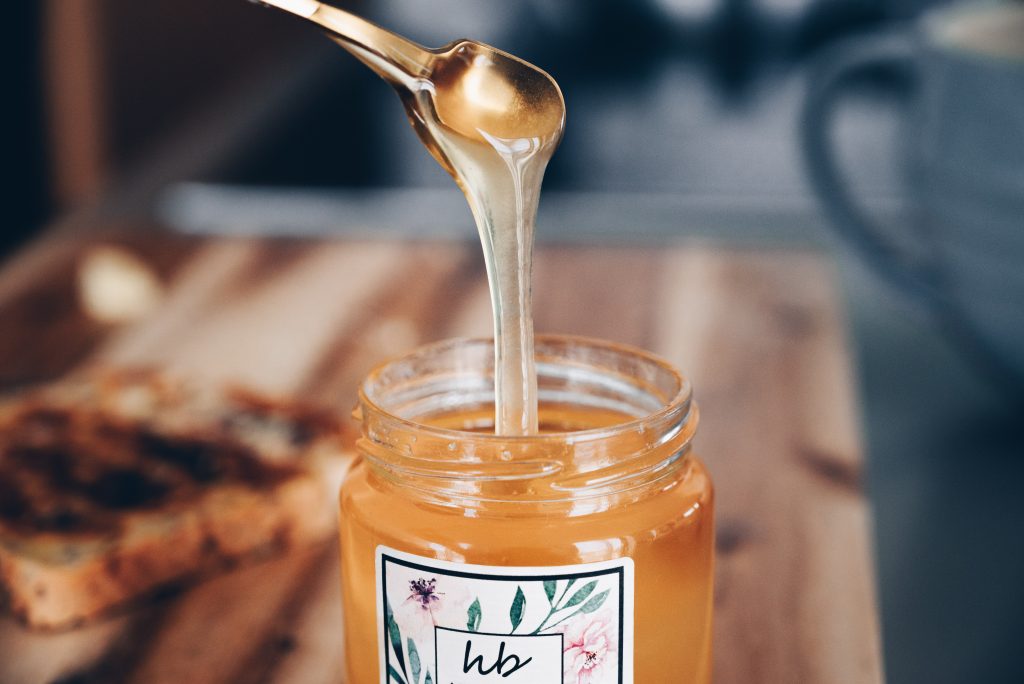
Matcha Macaron Role in the Kitchen
Matcha Macarons have become a popular treat in the culinary world. The vibrant green colour and unique flavour of Matcha make these macarons visually appealing and delicious. They offer a unique twist to the traditional French macaron, introducing a new flavour profile that is both exotic and comforting. Matcha Macarons are a testament to the versatility of Matcha, proving that it can be used in a variety of dishes beyond just tea.
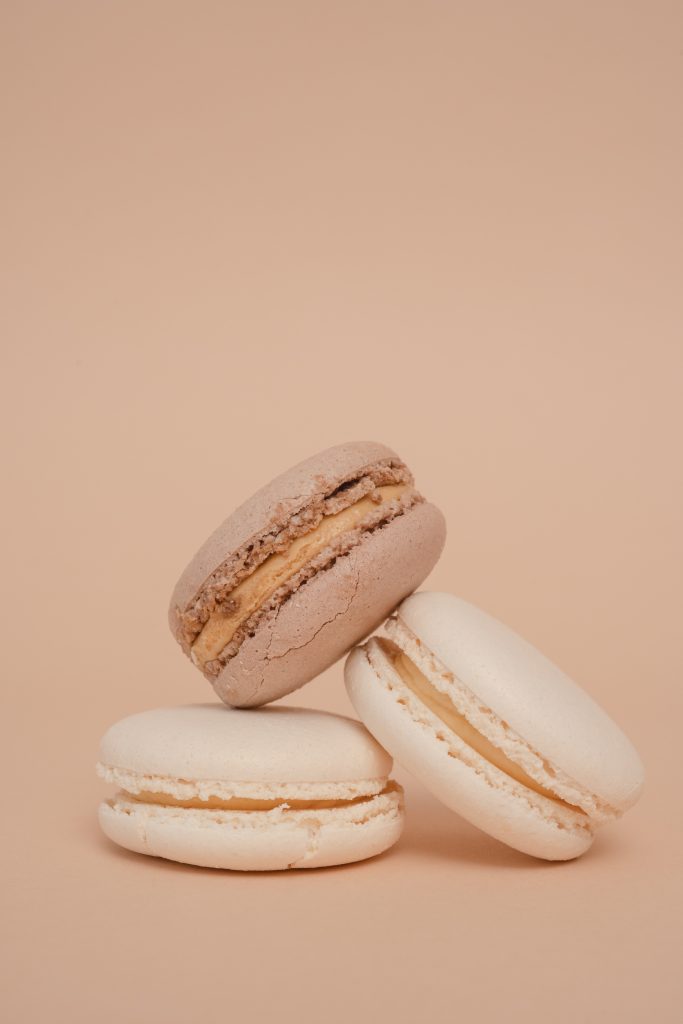
Macarons: A Journey into France’s Sweetest Delight
France is globally renowned for its cuisine, and confectionery is an integral part of the French culinary experience. An exceptional demonstration of this prowess is the macaron, a delightful pastry that perfectly epitomizes the balance of finesse, creativity, and taste. This small, round, colourful, meringue-based treat, with its distinctive ruffled circumference, is an elegant expression of French patisserie. Let’s explore the world of macarons, their history, how they’re made, and their impact on global dessert culture.

A History Rooted in Delight
Contrary to popular belief, the first macarons were not born in France, but in Italy. The name itself, derived from the Italian word ‘maccherone’, meaning ‘fine paste’, hints at its Italian origin. Introduced to France in the 16th century by Catherine de Medici’s Italian pastry chefs when she married King Henry II, the original macaron was a simple combination of ground almonds, sugar, and egg whites.
The modern French macaron, distinguished by its delicate two-cookie sandwich structure with a luscious filling, evolved much later in the 20th century. Pierre Desfontaines of the French patisserie Ladurée is credited with this innovation. Today, Ladurée and Pierre Hermé are two French houses renowned for their exquisite macarons, making them an essential stop for anyone visiting Paris.
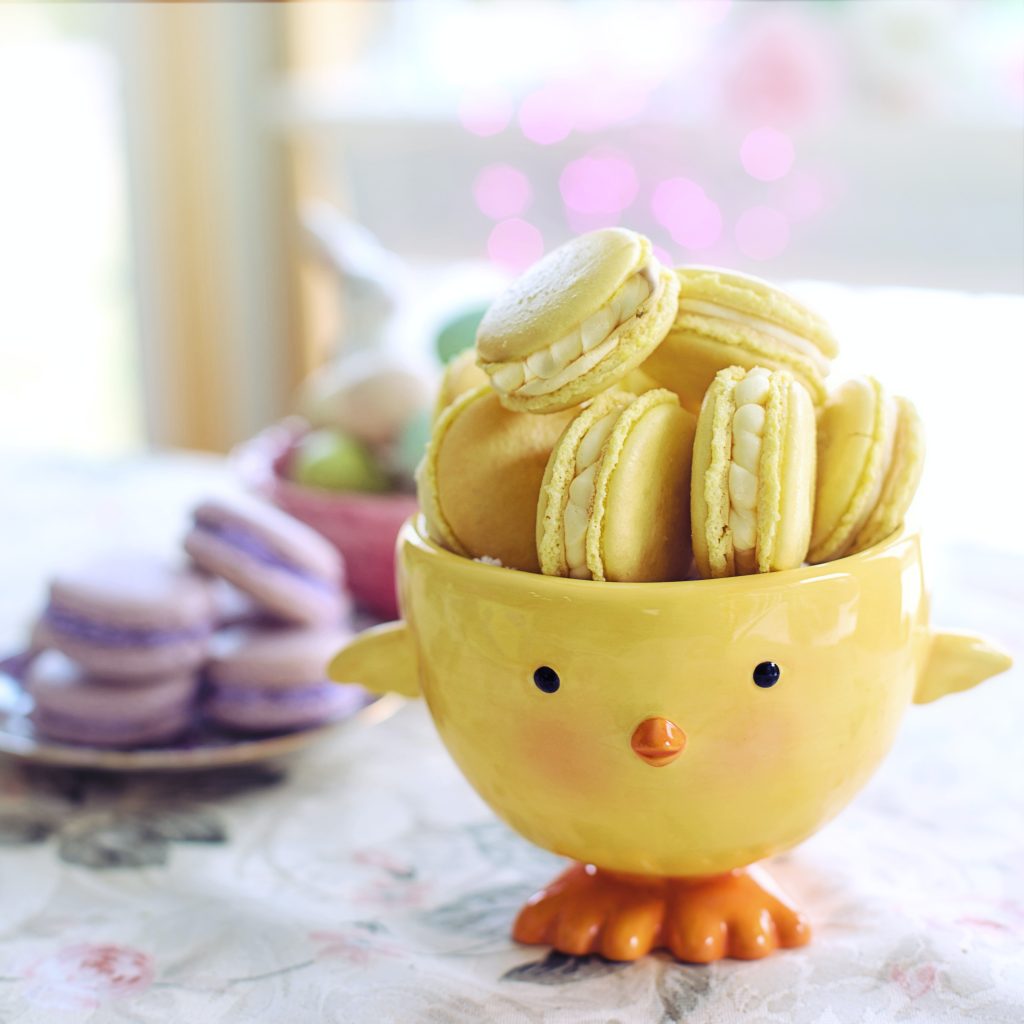
The Art of Making Macarons
Creating macarons is a delicate process that requires patience, precision, and a dash of artistry. The cookies are made from a mixture of powdered sugar, almond flour, and egg whites. After beating the egg whites to a meringue, the dry ingredients are carefully folded in. The mixture is then piped onto a baking sheet into small, circular dollops, which are left to rest before being baked. This resting period allows the macarons to develop their signature “feet” – the frilly edges on the bottom of each cookie.
The filling, often a ganache, buttercream or jam, is sandwiched between two cookies, creating the beloved macaron sandwich. A delicate balance must be struck between the subtly sweet, crisp shell and the rich, creamy filling. Flavours range from the traditional—like vanilla, chocolate, and raspberry—to the adventurous—like foie gras or matcha green tea.
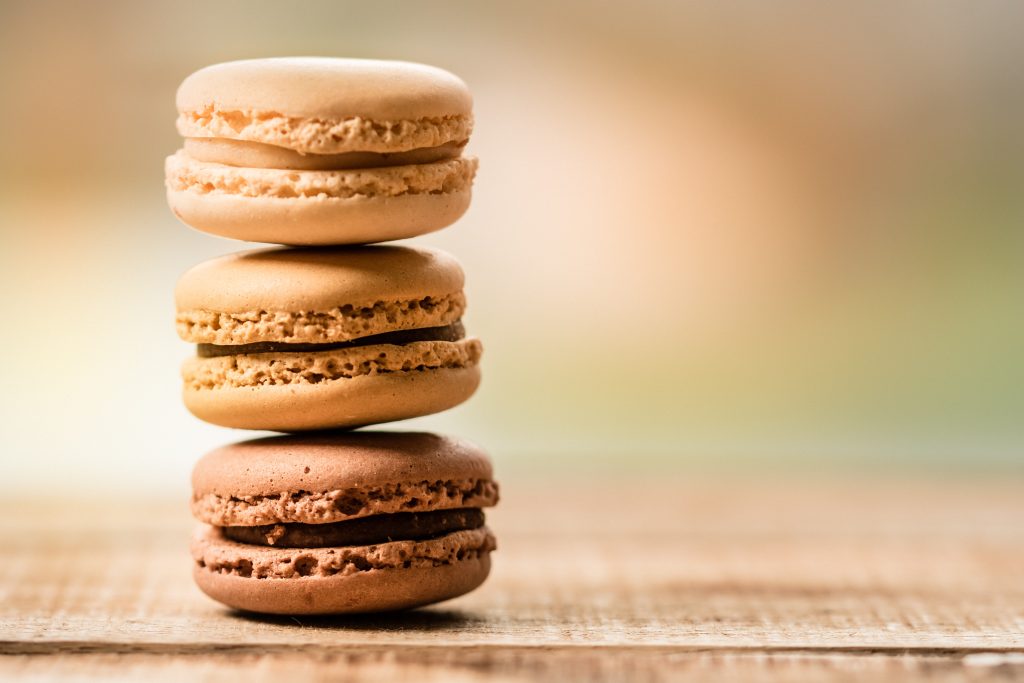
The Global Popularity of Macarons
Macarons have journeyed far beyond the borders of France and have been embraced by dessert lovers worldwide. They’re popular not only for their taste but also for their aesthetic appeal. Their vibrant colours and delicate structure make them both visually appealing and photogenic, contributing to their widespread popularity on social media platforms.
In America, macarons have enjoyed a particular surge in popularity, with boutique macaron shops springing up in cities across the country. Macaron Day celebrated on the 20th of March, encourages bakeries to give out free macarons and donate their sales to local charities.
Asian countries have also embraced this French dessert, adding their unique spin to the classic. In Japan, you’ll find macarons filled with matcha green tea ganache, while in South Korea, a popular flavour is a sweet-and-sour tangerine.
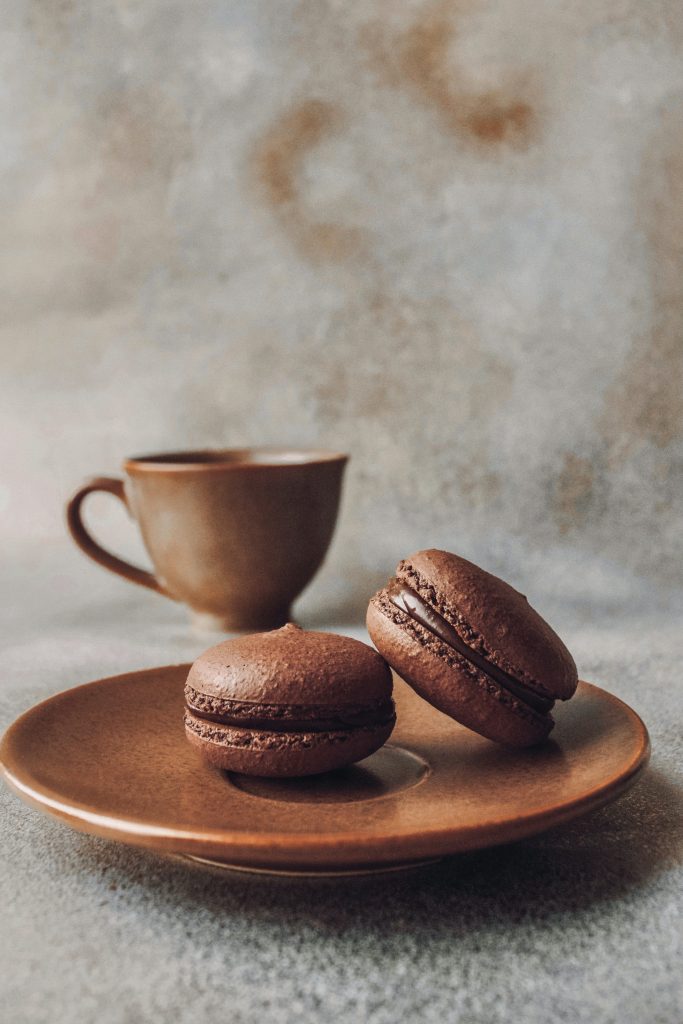
White Chocolate Ganache for Macarons from Chelsweets:
This article presents a delectable recipe for a white chocolate ganache filling for macarons, lauded for its silky-smooth, decadent, and delicious attributes. The recipe is remarkably straightforward, requiring only two ingredients: heavy cream or heavy whipping cream (not milk or half-and-half), and good quality white chocolate, including white chocolate bars, couverture, or chunks. White chocolate chips may also be used, provided they are from a reputable brand like Ghirardelli or Guittard.
The process begins by heating the cream and pouring it over the white chocolate. After letting the mixture sit for a couple of minutes, it’s mixed together with either an immersion blender or a spoon. Once the mixture is smooth, it’s covered with plastic wrap and chilled in the fridge for at least two hours or even overnight.
The ganache is then scooped into a piping bag and used to pipe a thick dollop onto one macaron shell. A second shell is gently pressed on top of the ganache to create a sandwich. The finished macarons are stored in an airtight container and chilled in the fridge overnight before consumption.
Key tips for successful preparation include making the ganache before the macaron shells to allow it ample time to set, measuring the ingredients with a kitchen scale for precision, and using good quality white chocolate for the best taste and consistency. If any bits of unmelted white chocolate are noticed in the ganache once it’s combined, the mixture is gently reheated and stirred until it’s smooth.
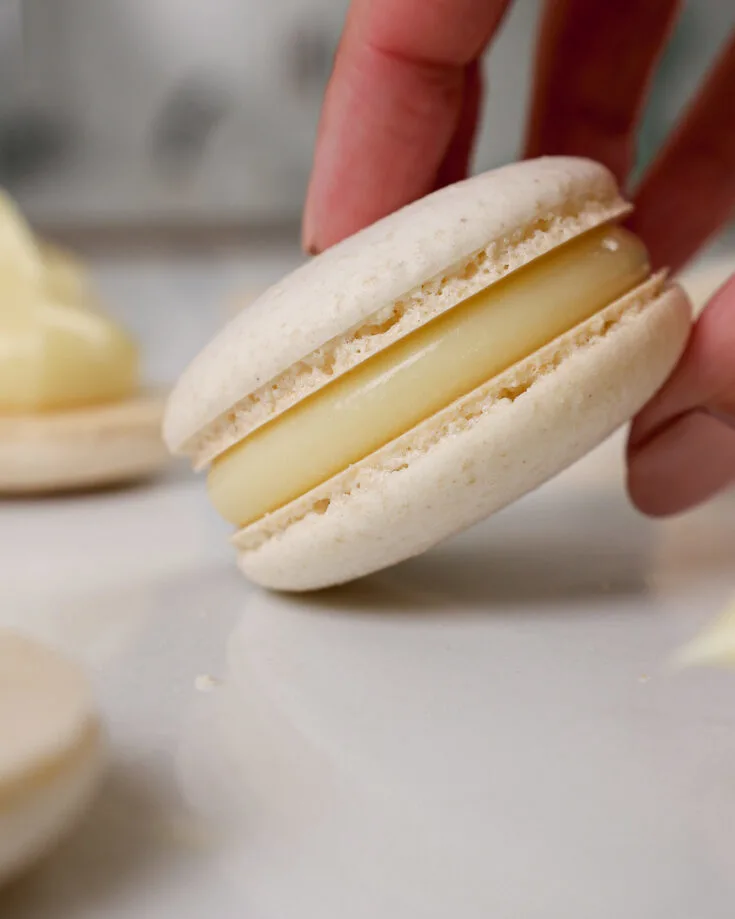
Ingredients:
- 2 parts good quality white chocolate
- 1 part heavy cream
- Matcha powder (amount to taste)
Instructions:
- First, heat up the heavy cream until it begins to steam, but don’t let it boil.
- In another bowl, have your white chocolate broken into pieces. Pour the hot cream over the chocolate, making sure all of the chocolate is submerged. Let it sit for a few minutes.
- Stir the mixture with a spoon or an immersion blender until it becomes a smooth ganache.
- At this point, add your matcha powder. The amount will depend on how strong you want the matcha flavour to be, but you might start with a teaspoon and then adjust to taste.
- Stir the matcha into the ganache until it is fully incorporated.
- Let the ganache cool to room temperature, and then cover it with plastic wrap pressed right against the surface of the ganache to prevent skin from forming.
- Chill the ganache in the fridge for at least two hours or overnight until it thickens up.
- When you’re ready to use the ganache, it should be thick enough to scoop into a piping bag and hold its shape. Pipe it onto your prepared macaron shells or use it as desired.
Remember to make the ganache before you make the macaron shells to give it time to set. This recipe can be adjusted to be dairy-free by using coconut cream in place of heavy cream.

